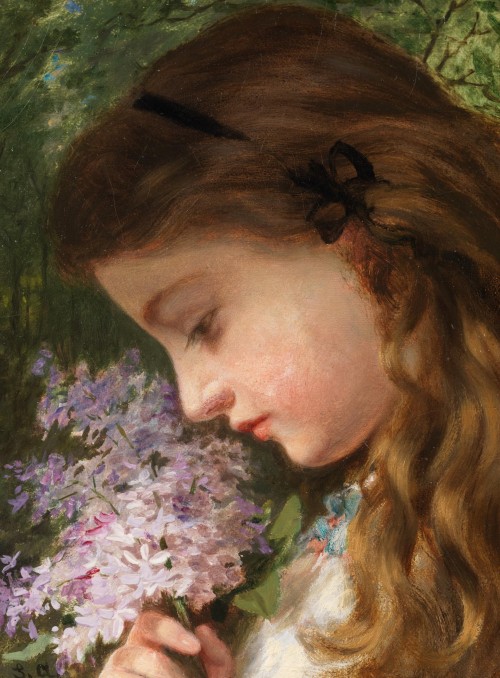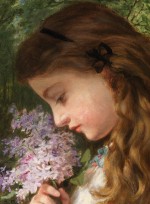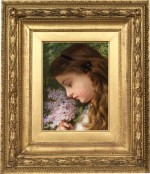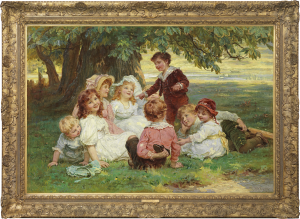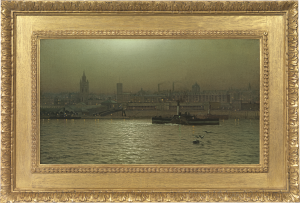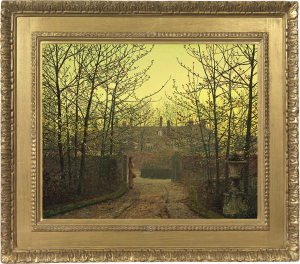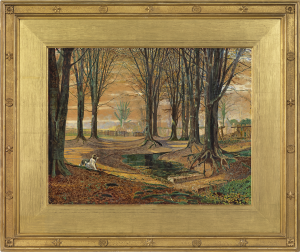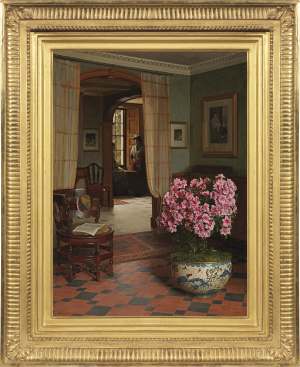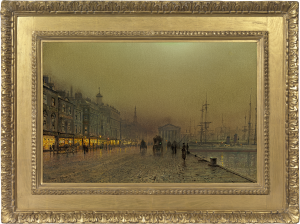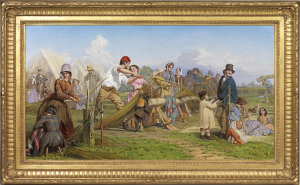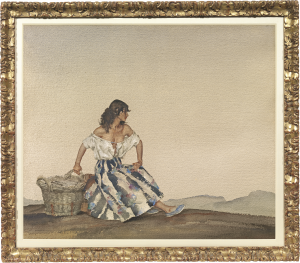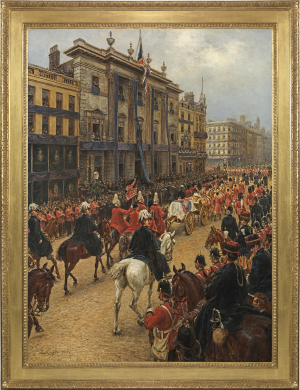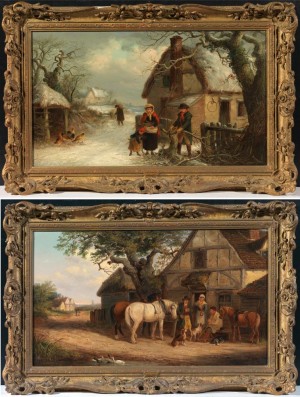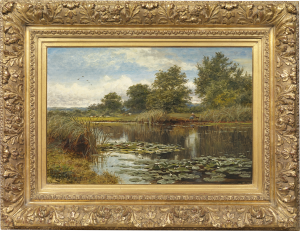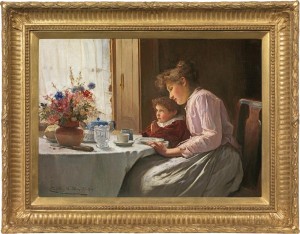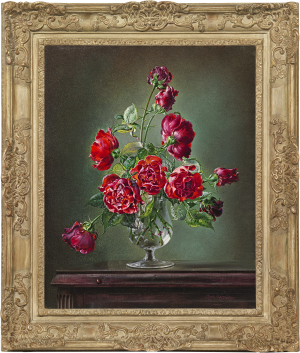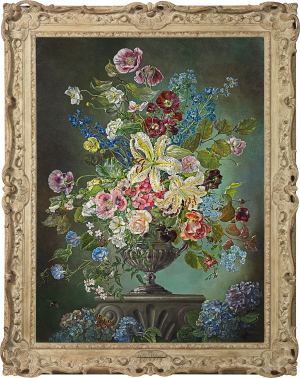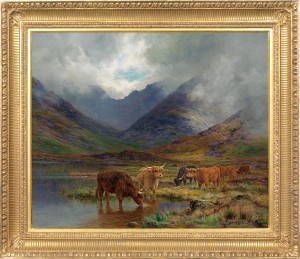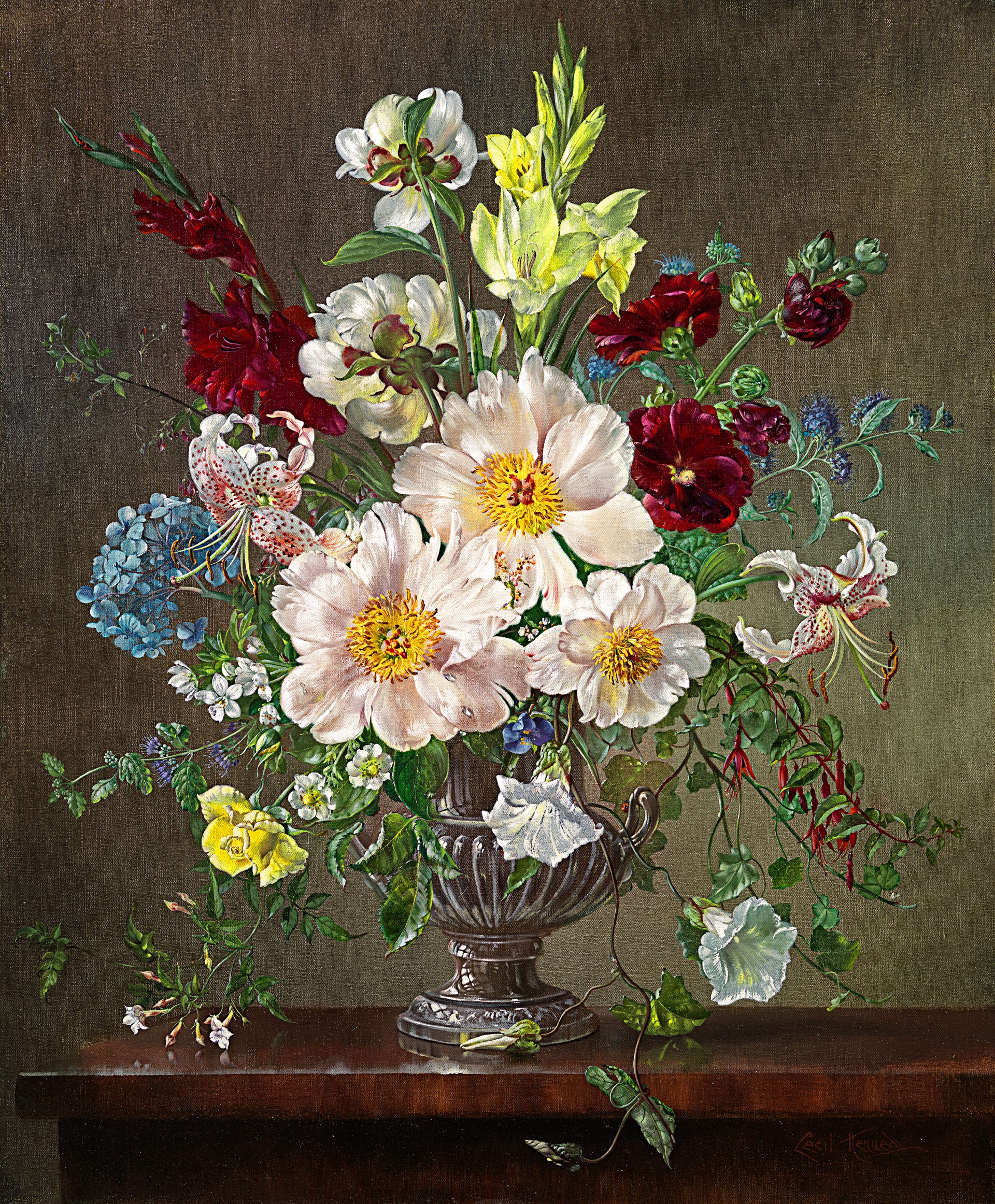Sophie Anderson
Girl with lilac
Oil on canvas: 8.7 x 6.5 (in) / 22.2 x 16.5 (cm)
Signed with initials lower left: s.a.
This artwork is for sale.
Please contact us on: +44 (0)20 7493 3939.
Email us
SOPHIE ANDERSON
Paris 1823-1903 Falmouth
Ref: CB 107
Girl with lilac
Signed with initials lower left: s.a.
Oil on canvas: 8 ¾ x 6 ½ in / 22.2 x 16.5 cm
Frame size: 16 ¼ x 14 ¼ in / 41.3 x 36.2 cm
In its original Pre-Raphaelite-style gilded composition frame
Painted circa 1865
Provenance:
C L Dodgson, better known as Lewis Carroll, 1865, Christ Church College Oxford, until his death in 1896;
to his sister at The Chestnuts, Guildford;
then by family descent
Christie’s London, 20th March 1998, lot 165;
Richard Green, London;
Private collection, Canada
Exhibited:
London, Richard Green, The 19th Century Through Painter’s Eyes, November 1998, no.2, illus. in colour
Literature:
Roger Lancelyn Green, The Diaries of Lewis Carroll, Cassell & Company Ltd, London, 1953, vol.1, p.232; vol.2, p.471, illus. (the painting is visible in a photograph of Dodgson’s study at Christ Church, Oxford, resting on the mantle-piece)
Morton N Cohen, Selected Letters of Lewis Carroll, 1982, p.122, illus. (as above)
Morton N Cohen, Lewis Carroll, A biography, MacMillan, London, 1995, p.232, illus. (as above)
This delightful work portrays a girl named Elizabeth Turnbull who was employed by the artist Sophie Anderson as a domestic helper and sitter. The painting was purchased in 1865 by Charles L Dodgson, a lecturer in mathematics at Christ Church, Oxford between 1855 and 1881. He is perhaps best known for his children’s books, written under the pseudonym, Lewis Carroll; Alice in Wonderland, published in the same year as the painting was purchased, 1865, and Through the Looking Glass, published in 1871.
Dodgson was fascinated by the world and imagination of childhood and sought to capture their charm both in his fantastical children’s stories and through his work as a photographer. On 6th July 1865, he described his encounter with Elizabeth Turnbull and his purchase of this charming portrait in his diaries: ‘I bought a little picture by Mrs Anderson, of a child’s head in profile: the original (child) was in the house, and was called into the room, a beautiful child about twelve, Elizabeth Turnbull by name. I intend taking a photograph of her in the same attitude as the picture.’[1]
Painted by Anderson, the leading children’s painter of the period and owned by Dodgson, perhaps the best known Victorian children’s author, this painting is a unique testament to the particular Victorian affinity with the beauty and innocence of childhood.
S Anderson, Pet canary S Anderson, Young girl S Anderson, The Children’s Story Book
Oil on canvas: 29 x 24 cm with a garland of flowers Oil on canvas: 100.3 x 125.7 cm
The New Art Gallery, Oil on canvas: 30.5 x 24.5 cm Birmingham Museums
Walsall Falmouth Art Gallery
SOPHIE ANDERSON
Paris 1823 - 1903 Falmouth
Sophie Anderson was a genre, landscape and portrait painter. Her subjects were mostly domestic scenes and she showed a particular talent for portraying children. She also developed a special affinity with Italian peasant imagery during her residence in Capri.
The daughter of the French architect Charles Gengembre and his English wife, Sophie Anderson was born in Paris. She studied under Baron Alexander Joseph Steuben (1814-1862) who was renowned as a painter of genre scenes and portraits. With the outbreak of the 1848 revolution, these studies were brought to an abrupt end. The Baron fled back to his native Russia, and Anderson and her family left for America. She established herself in Cincinnati and Pittsburgh as a successful portrait painter and married Walter Anderson (flourishing 1856-86), an English landscapist.
In 1854, the artist and her husband came to England. She made her début at the Royal Academy with a religious painting in 1855. Anderson provided five illustrations to Howe's Historical Collections of the Great West and many of her works were engraved for the Illustrated London News. Anderson exhibited at the National Academy of Design in New York, and in Britain at the Royal Academy from 1855 to 1896, the British Institution, the Royal Society of British Artists, Suffolk Street and at the Grosvenor Gallery. While in England she lived in London, Dalston in Cumberland, and Bramley, near Guilford, but around 1871 she moved to Capri because of ill health. Eventually in 1894, she returned to England and lived in Falmouth where she died.
The work of Anderson is represented in the Birmingham City Art Gallery and the Walker Art Gallery, Liverpool
[1] Roger Lancelyn Green (ed.), The Diaries of Lewis Carroll, Vol.1, Cassell & Company Ltd, London, 1953, p.232.

